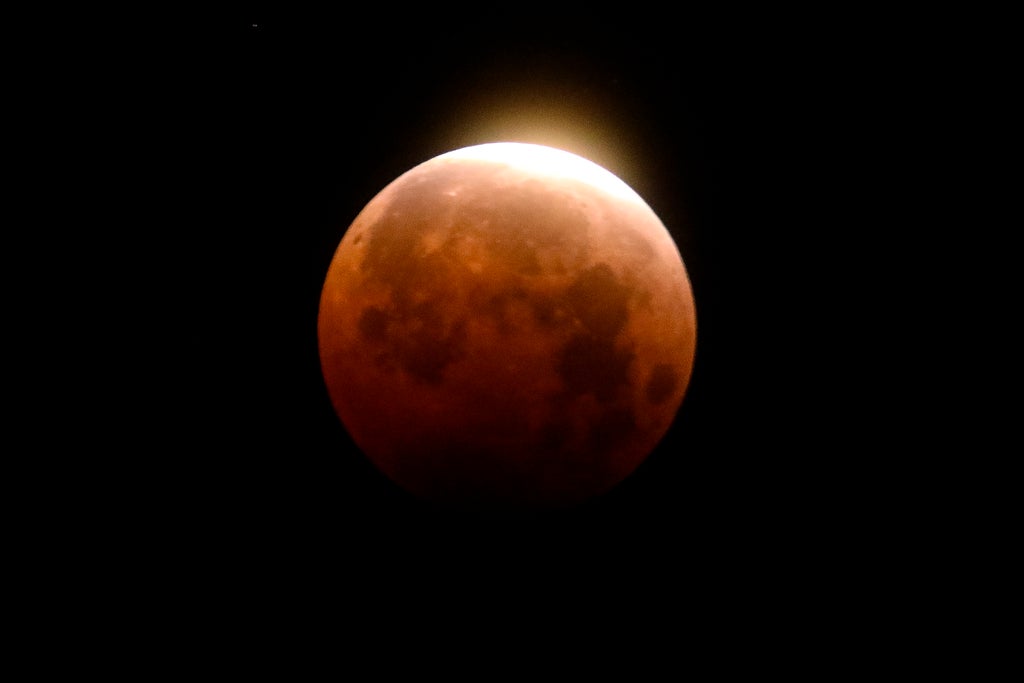
On Sunday night, an eerie red moon will be visible across much of the world thanks to a rare total lunar eclipse.
Beginning at 10.27pm ET on Sunday, the Earth will sit between the moon and the sun, and the moon will begin passing into the Earth’s shadow for a partial eclipse. By 11.29pm ET, the moon will be moving into the darkest part of the Earth’s shadow, called the umbra, and the total eclipse will begin, lasting just over an hour.
Light travels in waves, and different-coloured light has different wavelengths. Higher frequency blue and violet light has a shorter wavelength, and is scattered more easily by particles in the atmosphere. Meanwhile, lower frequency can more easily pass through the atmosphere unbothered.
During an eclipse, the only sunlight reaching the moon will be on the red end of the spectrum, giving the so-called “Blood Moon” its distinctive hue.
“The more dust or clouds in Earth’s atmosphere during the eclipse, the redder the Moon will appear,” according to NASA. “It’s as if all the world’s sunrises and sunsets are projected onto the Moon.”
The red moon should be visible by the naked eye in most of North America, South America, Africa, and Europe. Though those living near bright lights and tall buildings will have a harder time getting a glimpse.
The moon will appear red because of something called Rayleigh scattering, the same process that makes the sky blue and sunsets red.
"That’s the great thing about lunar eclipses is that you require no other gear other than a passion and interest in being outside and a clear horizon," Noah Petro, chief of Nasa’s Planetary Geology, Geophysics and Geochemistry Lab, told CNN.
Those without a clear view can always stream the action on NASA’s YouTube feed.
The astro-curious should act quickly if they want to see the red moon.
The next total lunar eclipse will occur on 8 November, and then we’ll have to wait until March 2025 to see one again.







